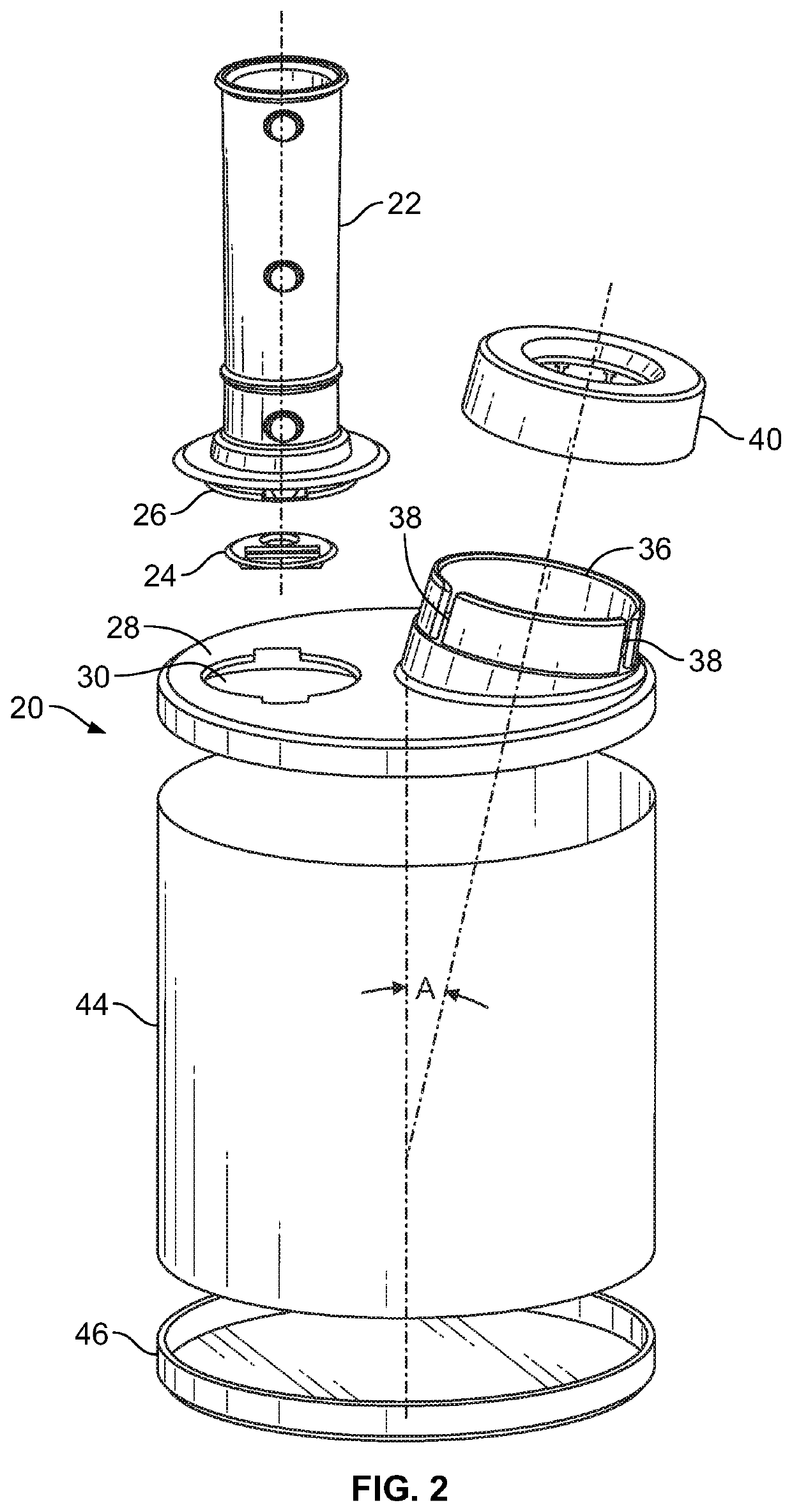Delivery system for metered dose inhalers
a delivery system and inhaler technology, applied in the field of inhalation systems, can solve the problems of poor disease control, poor lung deposition of medication, and many patients cannot or will not use pmdis, and achieve the effects of effective inspiratory flow reed signal, simple mechanism for patients to easily operate, and simple and efficient us
- Summary
- Abstract
- Description
- Claims
- Application Information
AI Technical Summary
Benefits of technology
Problems solved by technology
Method used
Image
Examples
Embodiment Construction
[0034]As described above, FIG. 1 illustrates the components of the intact press and breath MDI (pMDI) 10. Turning to FIG. 2, there is illustrated an exploded view of a delivery device 20 for press and breath metered dose inhalers 10. There is a mouthpiece 22, containing a screen 48, that has a reed 24 inserted into a lower end 26 of the mouthpiece 22. The mouthpiece 22 is inserted into a top end cap 28 through opening 30. The opening 30 has two opposite rectangular slots 32 which receive locking tabs 34 at the lower end 26 of the mouthpiece 22 (seen in FIG. 6).
[0035]The top end cap 28 also has an upstanding collar 36 angularly disposed with respect to the top planar surface of the top end cap 28. The top end cap 28 is made from high density polyethylene (HDPE) and is substantially flat except for the perimeter that may have an upstanding or tapered edge or other surface imperfections due to the plastic molding process. There are a pair of vertically disposed keyways 38 cut into the ...
PUM
 Login to View More
Login to View More Abstract
Description
Claims
Application Information
 Login to View More
Login to View More - R&D
- Intellectual Property
- Life Sciences
- Materials
- Tech Scout
- Unparalleled Data Quality
- Higher Quality Content
- 60% Fewer Hallucinations
Browse by: Latest US Patents, China's latest patents, Technical Efficacy Thesaurus, Application Domain, Technology Topic, Popular Technical Reports.
© 2025 PatSnap. All rights reserved.Legal|Privacy policy|Modern Slavery Act Transparency Statement|Sitemap|About US| Contact US: help@patsnap.com



